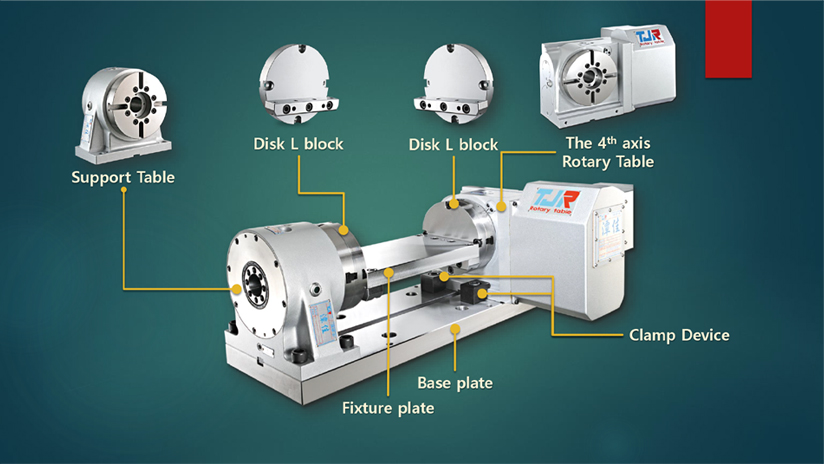A support table is used to support the outboard end of a part or fixture, ensuring stability during machining operations. The center height of the support table must match the center height of the rotary table to ensure proper alignment.
The type of support table you need depends on your specific application. Support tables can either have a simple bearing setup or come equipped with a pneumatic or hydraulic brake system. If machining will occur on the side of the part or fixture being supported, a model with a brake system is recommended. The brake system on the support table is typically connected to the rotary table's brake system, activating simultaneously when the rotary table's brake is engaged. For instance, if the rotary table uses a pneumatic brake, the support table should also have a pneumatic brake. Similarly, a hydraulic brake on the rotary table should be paired with a hydraulic brake on the support table.
To calculate the total braking force for the system, combine the brake force from both the rotary table and the support table. The provided image illustrates the role of the support table within the classic trunnion system of a 4th axis rotary table, showing how it integrates into the entire setup.

